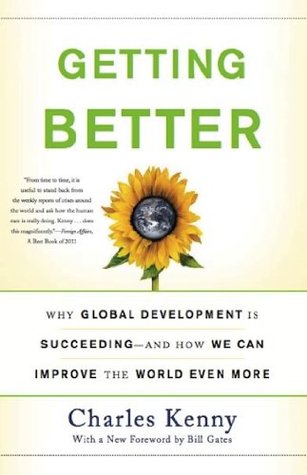Kindle Notes & Highlights
Read between
June 5 - June 12, 2023
New York University economist Bill Easterly, a longtime intellectual opponent of Sachs in particular and of international aid organizations in general, was outraged on reading Sachs’s report and demanded that we “discard the Planners’ patronizing confidence that the Planners know how to solve other peoples’ problems better than the people themselves do.”
If policies change rather slowly over decades, but growth changes rather dramatically, that suggests policy change can’t be the driving force behind changes in growth rates. The paper was titled “Good Policy or Good Luck?”—it came down heavily in favor of the latter.6
The subsequent transition to capitalism did push a number of Eastern European economies to collapse. Russia, moving sporadically toward a more liberal economy, saw its average incomes almost halve after the end of the Cold War. Of course, models based on the Washington Consensus would suggest that Russia’s growth rate should have increased as it moved toward more market-friendly policies and institutions. Meanwhile, China’s gradualist approach to reform—the country remains officially communist—has ushered in the greatest decline in world poverty in history.
Paul Romer, a father of “endogenous” theories that emphasize barriers to technology adoption as the reason for slow growth, suggests that it is process technologies that are the key to the story. He argues that systems like Walmart’s management of inventory data have had a bigger impact on economic growth than inventions such as the transistor, for example. Or take the example of Toyota, until recently (when some drivers started to find its accelerator technology a little too sticky) the auto industry’s most profitable firm. Toyota does not produce the most innovative or exciting cars (compare
...more
Smith was writing in the late eighteenth century, when GDP per capita in the United Kingdom was somewhere below $1,700. More recently, Nobel winner Amartya Sen has elaborated on the idea of capabilities as better measures of quality of life than mere income. His ideas informed the United Nations Development Program’s Human Development Index, an attempt to come up with one number that captures a multidimensional view of development progress incorporating health and education.
Regarding violence, wealthy countries appear to be less often victim to civil war, less often perpetrators of mass killings of civilians, and less likely to fight one another. Think of Thomas Friedman’s Golden Arches Theory of international relations—that (Serbia and NATO aside) no two countries with a McDonald’s have gone to war. But at the same time, the number of major wars ongoing worldwide rose from four to twenty-six between 1946
Looking at a wider range of measures, economist Bill Easterly explored “Life During Growth” and discovered that the rate of improvement in almost all of the quality-of-life indicators that he studied was only weakly related to the rate of economic growth. Overall, Easterly’s study found that for only eight of sixty-nine indicators was there any statistically significant positive relationship between income and change in quality of life—being richer doesn’t necessarily equate with higher quality of life. And his study suggested that income change was a driving factor behind improvements in only
...more
It may be, then, that there is a strong impact of GDP per capita growth on quality of life at low incomes, which diminishes as countries become richer. Is it this possibility alone that clouds a strong cross-country relationship between income and quality of life?27
The short answer is “no.” We’ve seen that even without any increase at all in GDP per capita, significant improvements in quality of life can be—and frequently have been—accomplished. Perhaps unsurprisingly, even if we restrict an analysis of income growth and quality-of-life improvement to poor countries, relationships still appear weak.28
The range of technologies that are available and utilized by many of the world’s poorest people today but were far less ubiquitous fifty or a hundred years ago is considerable. Beyond medical technologies including bed nets, vaccination, and antibiotics, the list would include building materials such as cement, corrugated iron, steel wire, piping, nails, and tools; household items including plastic sheeting and containers; synthetic and cheap cotton clothing; transport technologies from rubber soles to bicycles; infrastructure services including all-weather roads and buses; water pumps,
...more
John Snow’s analysis of London’s cholera outbreaks in the 1850s formed the scientific basis for overturning miasma theories and connecting the disease with infected water. A further spur to sewage reform was Pasteur’s early work confirming the germ theory of disease. And with the 1865 completion of Joseph Bazalgette’s five new sewer lines that transported waste to the east out of the city, the capital freed itself from major cholera outbreaks—if at considerable expense.12


